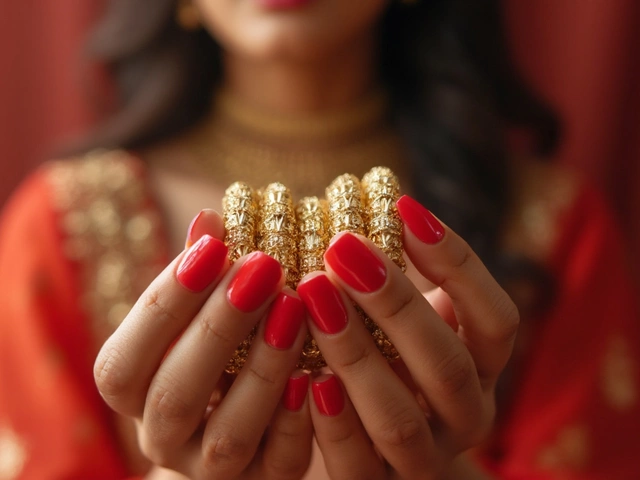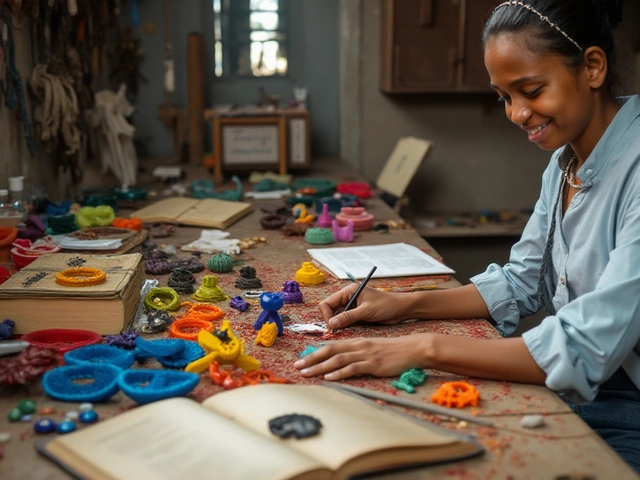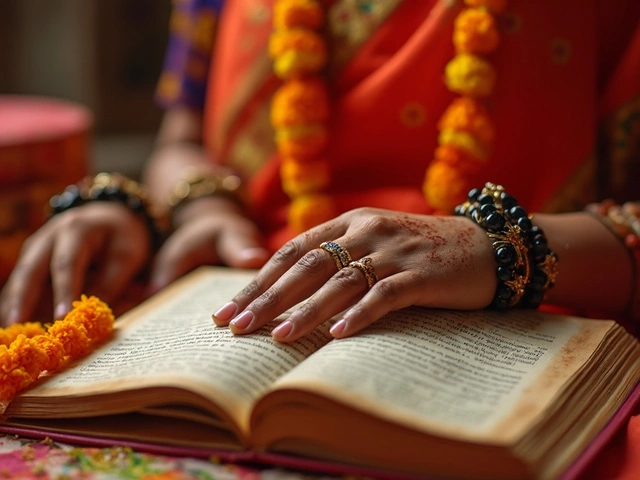
If you think Paris or Milan is the final word in luxury jewelry, you’re missing half the story. There’s a reason serious collectors and travelers have their eyes on India, especially if temple jewellery is on your wishlist. These pieces aren’t just about looking rich—they’re tied to centuries of tradition, and the way they’re made sets them apart from the mass-produced stuff you find elsewhere.
Indian jewelers don’t just use gold and gemstones; they turn cultural stories and regional styles into wearable art. Temple jewellery is a sharp example. These pieces started out as adornments for deities in South Indian temples but have become a must-have for anyone who wants jewelry with some soul. The best part? Because India sources much of its own gold and gems, you often pay a lower markup than you would in places like Switzerland or Dubai.
- Why India Is a Powerhouse for Luxury Jewelry
- Master Craftsmanship and Local Heritage
- Temple Jewellery: India’s Signature Style
- Comparing India to Europe and Beyond
- Tips for Safe and Smart Jewelry Buying
Why India Is a Powerhouse for Luxury Jewelry
India isn’t just another spot on the jewelry map—it’s where tradition, skills, and raw resources collide to make something special. In 2024, India was the world’s second-largest consumer of gold, right after China. That’s not just because people here like a bit of bling. It’s because gold and jewelry are woven into everything from weddings to festivals. Families pass down temple jewellery for generations, and many see it as a solid investment, not just a style statement.
The country’s edge starts right at the source. India is home to some major diamond cutting hubs, like Surat, which handles about 90% of the world’s diamonds by volume. That means you’re not paying extra for shipping stones worldwide—they’re already here. Luxury jewelry brands in India also have direct access to gold, often sourced from within the country or nearby neighbors. So the markup you see in European showrooms? Way smaller here.
It’s also about numbers. India exports fine jewelry to over 160 countries, racking up billions in global sales every year. But walk into a studio in Chennai or Hyderabad, and you’ll see pieces you won’t find in any international boutique—handcrafted temple jewellery that blends ancient patterns with modern design tweaks. You want a one-of-a-kind piece? This is the place.
Here’s what sets India apart from the rest:
- Temple jewellery makes up a big chunk of the local luxury market, especially in the south.
- Handmade techniques—like Kundan and Meenakari—aren’t just buzzwords, they’re skills passed down for centuries.
- Labor costs are lower, so your money goes further on actual craftsmanship, not just branding.
- Cultural demand keeps the industry fresh, with new designs rolling out for every major festival and life event.
| Country | Gold Consumption (tons) | Diamond Cutting Volume (%) |
|---|---|---|
| India | 750 | 90 |
| Switzerland | 110 | 4 |
| Italy | 40 | 2 |
So when people ask where the smart choice is for buying luxury jewelry, India keeps popping up for a reason. More styles, better value, and deep heritage wrapped into every piece—it’s tough to beat.
Master Craftsmanship and Local Heritage
When people talk about luxury jewelry in India, they’re really pointing at how much skill and heritage go into each piece. Indian jewelers don’t just make accessories; many are part of families that have been at it for generations. We’re talking passed-down techniques, secret alloys, and design tricks that you won't learn in a quick YouTube tutorial.
Take temple jewellery for example—making it calls for something called ‘nakashi’ work, where gold sheets are painstakingly beaten and shaped by hand. Chennai and Hyderabad are known hot spots for this kind of jewelry, and families in these cities often specialize in certain styles, like repoussé (that’s a fancy term for pushing designs out from the back of the metal).
It’s not just about skill, either. Local heritage decides what goes into each piece. In the south, for instance, you’ll see a lot of rubies and emeralds, sometimes mixed with uncut diamonds called 'polki.' The designs themselves are loaded with symbols—peacocks, lotuses, even gods and goddesses, all worked into necklaces or bangles. These details link you straight to Indian culture, unlike the mass-made stuff from global brands.
Here’s a fact that might surprise you: according to the World Gold Council, India consumed around 747 tons of gold in 2023, with a big chunk used for jewelry. That’s a lot of gold being turned into wearable art right at home, supporting local miners, artists, and families.
- Family businesses are common—skills are handed down, not bought in a classroom.
- Traditional methods—like lost-wax casting and hand engraving—are still used.
- Each region has its own local styles, materials, and tips for care.
- The jewelry isn’t just beautiful; it tells a story tied to local festivals and temple rituals.
This level of dedication and community is hard to find in jewelry stores outside India. If you care about authenticity, India really is the place for true, high-end temple jewellery.
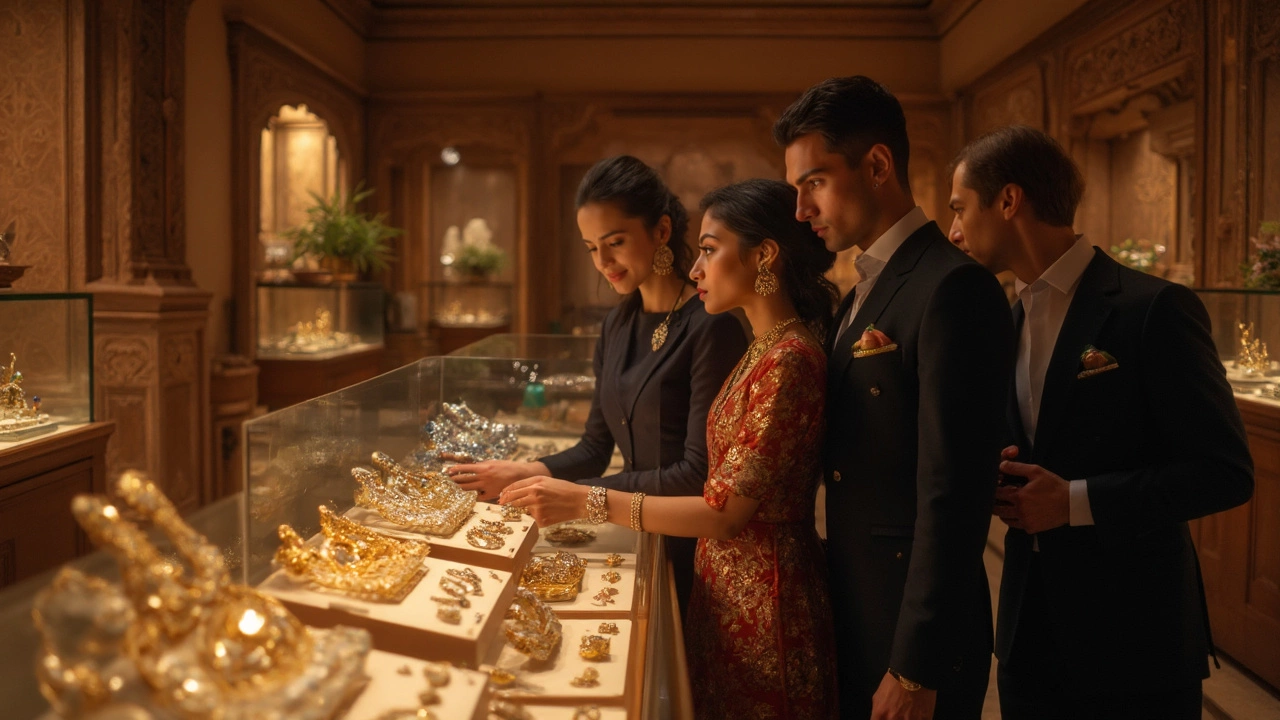
Temple Jewellery: India’s Signature Style
When people say temple jewellery, they're talking about a look you just can’t fake or find in other countries. This isn’t your average gold chain or ring—temple pieces are chunky, bold, and packed with meaning. Back in the 9th century, these ornaments first showed up in South Indian temples. Priests would decorate idols with heavy gold necklaces, earrings, and bangles, most of them hand-carved with designs inspired by gods, goddesses, and epic stories.
What makes temple jewellery so unique? It’s all about craftsmanship and the details. Small family workshops, especially in spots like Chennai, Hyderabad, and Coimbatore, build each piece by hand. You’ll spot classic motifs—think peacocks, lotus flowers, or Lakshmi (the goddess of wealth). They always use real gold, often with rubies, emeralds, and uncut diamonds popped in for color. There’s no room for shortcuts—anyone can spot the difference between mass-produced bling and a real Indian temple necklace.
- Each piece is unique because handcrafted means slight differences every time.
- The use of 22-karat gold is standard, which means heavier, richer-looking jewelry compared to Western 14K or 18K pieces.
- Designs stay pretty close to tradition—temple jewelry usually sticks to authentic, time-tested styles instead of flashy trends.
Here’s something most people don’t know: Temple jewellery isn’t just for show or special events. In India, folks pick these up for weddings, religious festivals, and family gifts. And these aren’t throwaway fashion—they hold their value, sometimes even getting passed down for generations. There are folks who only wear their temple pieces on big occasions, but others use them to invest in gold they can actually enjoy wearing.
Want the numbers to back that up? Nearly 65% of luxury jewelry sales in South India are linked to temple-style designs, according to a 2023 market study in Chennai. That’s not just hype—that’s the local economy at work.
If you’re thinking of grabbing a piece for yourself, stick with sellers who focus on temple jewellery india. Look for hallmarks and get bills showing carat and stone details. Don’t let anyone sell you a story; let them show you the real thing.
Comparing India to Europe and Beyond
Most folks think luxury jewelry means shopping big-name houses in Europe, like Cartier in Paris or Bulgari in Rome. Sure, these brands have a crazy long history and their designs are hard to beat for that glitzy, red-carpet look. But when you put them side-by-side with what’s coming out of India, especially in the temple jewellery scene, you get a totally different story.
European jewelry is all about high gloss, precision, and signature branding. You pay a lot for that label, plus the import duty and local taxes that come with buying in big cities like Paris, London, or Geneva. In fact, buying a gold necklace in Geneva can cost up to 30% more than the same piece, gram-for-gram, in Mumbai—and that’s before you even get to craftsmanship differences.
Now, India is unique for a few reasons:
- It’s one of the world's top consumers of gold, so you’ll find a stronger market and more competitive prices.
- Most stores offer both machine-made and totally handmade designs, especially in the temple jewellery niche.
- Skilled craftspeople in India use ancient techniques that are barely seen elsewhere, like kundan setting and meenakari enameling.
Want some numbers to chew on? Here’s a quick look:
| Country | Gold Jewelry Price Range (per gram, USD, 2024) | Main Style |
|---|---|---|
| India | $63 - $74 | Temple, Kundan, Meenakari |
| France | $75 - $95 | Haute joaillerie, Classic European |
| Italy | $70 - $90 | Modern, Elegant, Filigree |
When you compare this, especially if you love temple jewellery, India really stands out. Plus, local jewelers are used to working with international buyers, so you can get certificates for gold purity and detailed receipts—something that's not always a given when shopping in the more boutique European spots.
It's not just about price and style. In India, buying jewelry can feel a lot more personal. Customization is way more common, so you can sit down with a designer and actually tweak the pieces to fit your taste. Try getting that level of personal touch from a window in Paris or Milan.
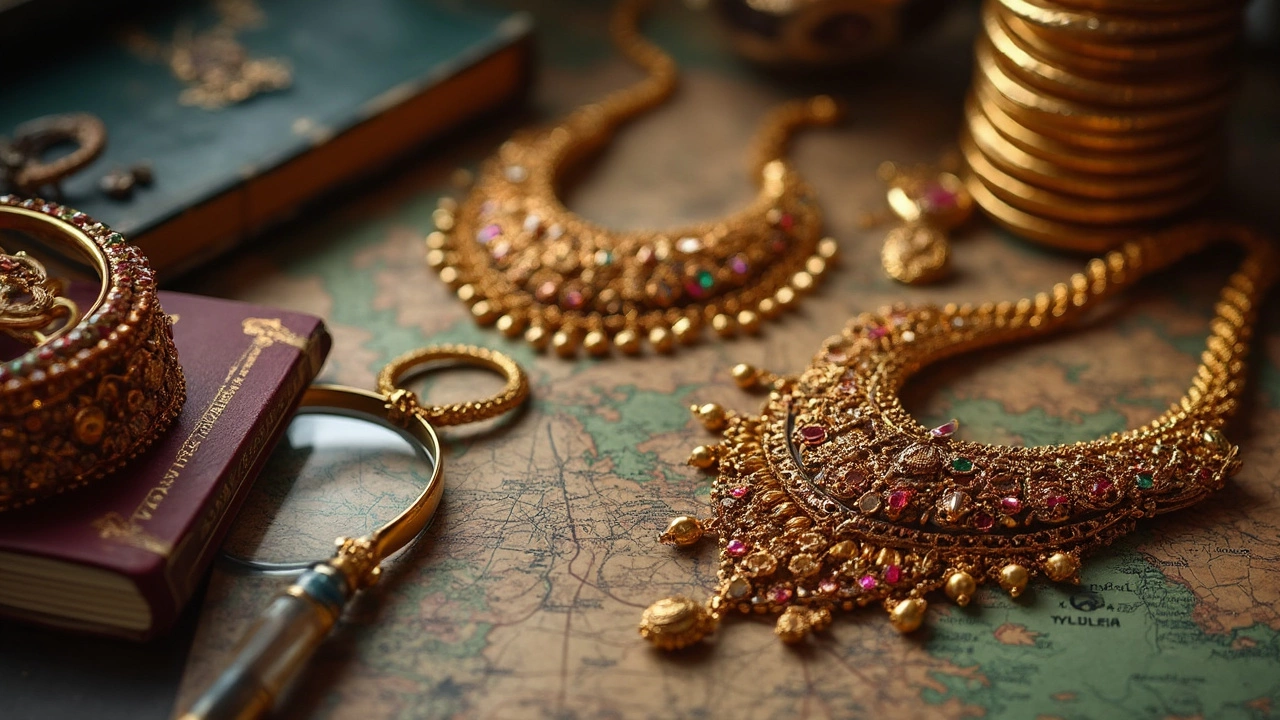
Tips for Safe and Smart Jewelry Buying
Buying luxury jewelry in India can be an awesome experience, but you need to be sharp—scams and fake gems still pop up. Let’s go through what really matters, so you don’t wind up regretting your splurge.
- Always get a bill and a certificate. Reputable shops give you a receipt and a certificate of authenticity, especially for gold and gemstones. The best Indian jewellers are part of organizations like the Gem & Jewellery Export Promotion Council (GJEPC). If a seller dodges giving papers, walk away.
- Understand the purity marks. For gold, look for the BIS Hallmark. This shows the jewelry meets the national purity standards—think of it as quality control for your bling. For gemstones, IGI or GIA certificates are what you want. If you don’t see these seals, your piece might not be what it claims.
- Know when to bargain. Haggling is normal in some local markets, but not so much at big retail chains. Major jewelers like Tanishq or Kalyan Jewellers rarely negotiate. If you’re hitting smaller shops or family-owned spots, negotiation is part of the game, but still—make sure you know the metal and gem rates for that day. Gold prices in India can change every day. For example, in April 2025, 24K gold sits around 6,900 INR per gram.
- Check return and buyback policies. Good jewelers let you return or exchange pieces under certain conditions. Many Indian stores also offer buyback value if you bring the jewelry back later. This is big if you ever plan to upgrade your collection or cash in on gold’s rising value.
- Ask about making charges. In India, you pay for the gold plus a 'making charge' (labor cost). This can be up to 25%—so ask upfront. Sometimes, traditional styles like temple jewellery have higher making charges because of the skilled work involved.
| Checklist | What to Look For |
|---|---|
| Gold Hallmark | Look for the BIS logo stamped on the piece |
| Gemstone Certification | IGI, GIA, or GJEPC paperwork included |
| Retailer Reputation | Read real reviews, not just flashy ads |
| Return Policy | Clear written rules, not just a handshake |
And don’t forget—check the shop’s reputation online or with locals. Even in the famous jewelry markets of Chennai or Hyderabad, you’ll find both legendary master craftsmen and new sellers banking on tourist footfall. A quick scroll through public reviews can save you a headache later.
